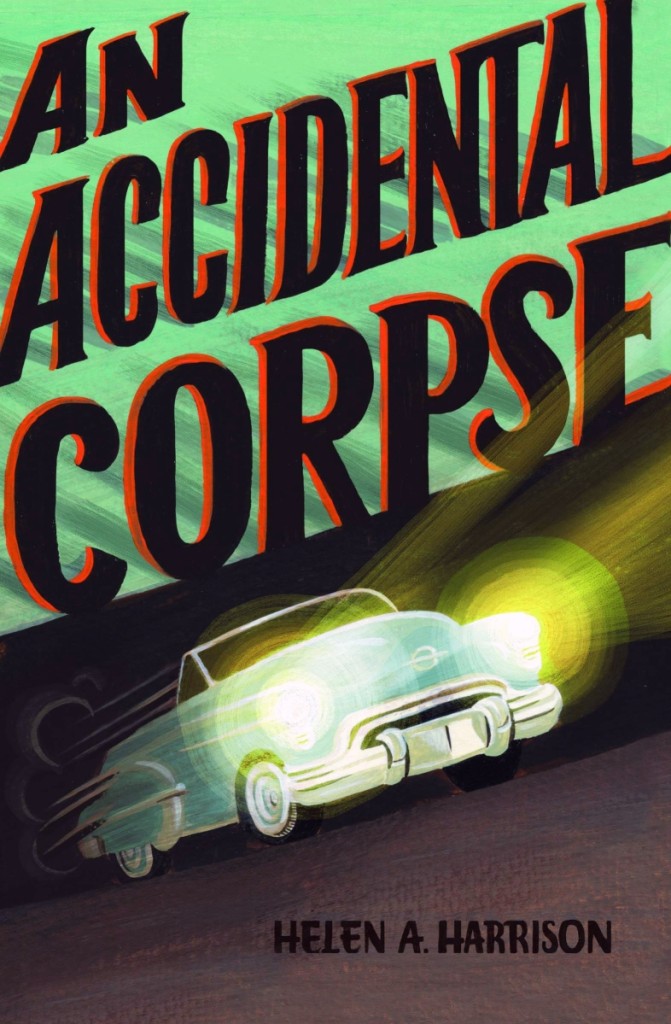 Would you sacrifice your summer vacation to solve a mysterious death?
Would you sacrifice your summer vacation to solve a mysterious death?
Helen A. Harrison, director of the Pollock-Krasner House and Study Center and an authority on Twentieth Century American art, has authored a breezy vacation read that imagines a married couple, New York City detectives, who, accompanied by their young son, juggle their summer stay in the Hamptons with trying to solve this mystery: A dead girl was found in the back seat of Jackson Pollock’s car when the artist died in an August 11, 1956, car crash. But had she been murdered before the crash? An Accidental Corpse takes the couple – and the reader – on a sleuthing tour through the 1950s community 100 miles from the center of the art universe.
Describe your role as director of the Pollock-Krasner House & Study Center.
My primary role there is to preserve and interpret the artists’ home and studio, a National Historic Landmark. I also organize the exhibitions and public programs, oversee the Study Center’s research collections and encourage artists to respond creatively to the site.
How did you make the transition from art historian and commentator to mystery/thriller writer?
I think of fiction writing as another line on my resume. I’m still actively involved in art-historical research and in art commentary in my monthly “Eye on Art” column for the Sag Harbor Express.
The Fitzgerald family – New York City detectives Brian “Fitz” Fitzgerald, Juanita Diaz and their son TJ – are delightful characters, but you say they are fictional creations. Where did you get your inspiration for them?
Fitzgerald and Diaz were introduced in my first mystery novel, An Exquisite Corpse, for which I researched the New York City Police Department of the 1940s. I needed two police officers, one in Greenwich Village and one in Spanish Harlem. I decided to make one of them female, and naturally romance ensued. By 1956, when An Accidental Corpse is set, it seemed right to introduce a youngster who could be a vital character in the story.
Pollock is not presented as a sympathetic figure. Have you gotten any pushback from the art world that wants to protect his legacy?
It’s not in dispute that Pollock was a problematic personality all his life, and more so toward the end. The fictionalized elements notwithstanding, I stuck pretty close to his biographers’ accounts of his heavy drinking, bouts of depression, tearful incidents and erratic behavior. Not to mention his reckless driving, which is what killed him.
 Both Nita Diaz and Lee Krasner are portrayed as strong personalities, at odds with conventional women’s roles in the 1950s. Was this intentional?
Both Nita Diaz and Lee Krasner are portrayed as strong personalities, at odds with conventional women’s roles in the 1950s. Was this intentional?
The real Lee Krasner was just as formidable as I portray her. Those who knew her much better than I did can attest to the inner resolve that helped her through her many tribulations with Pollock and after his death. The fictional Nita also had to prevail against the odds in a profession dominated by male authority figures and gatekeepers. They both needed determination and grit to see them through.
We’re told that this novel is part of a “corpse trilogy.” Who’s the next to go – and will he or she also be tied into the art world?
Dunemere Books will publish An Exquisite Corpse as a prequel to this novel. The third book, An Artful Corpse, is set in the 1960s at the Art Students League of New York, where TJ, now 19, is attending class. He helps solve the murder of a former star teacher at the league, but I won’t give away who that is.
You describe a local invitational art exhibition that reflects the Hamptons’ split personality in the 1950s – traditional vs avant-garde. What’s it like these days?
Nowadays the art scene is so diverse that such issues are moot. The Art Wars, which indeed divided Guild Hall’s audience back in the 1950s, are a thing of the past. The term Art Wars was coined in a 1957 East Hampton Star review by the novelist and critic Gerald Sykes. The first vanguard incursion was in July 1949, when the invitational exhibition “17 Artists of Eastern Long Island” included work by Pollock, Krasner and several other abstractionists. The conservative painters and their genteel fans were outraged, but according to Guild Hall records, the show boasted record attendance, and all three of Pollock’s paintings were sold. The following summer’s invitational – which included work by Sykes’ wife, the painter Buffie Johnson – was devoted exclusively to abstract art, further polarizing the opposition.
Best place to knock down a cocktail in the Hamptons?
If you want to belly up to a bar that once supported Pollock, it has to be either the Springs Tavern (formerly Jungle Pete’s) on Fort Pond Boulevard in Springs, or Sam’s on Newtown Lane in East Hampton village, where he reportedly did break the front window.
-W.A. Demers




